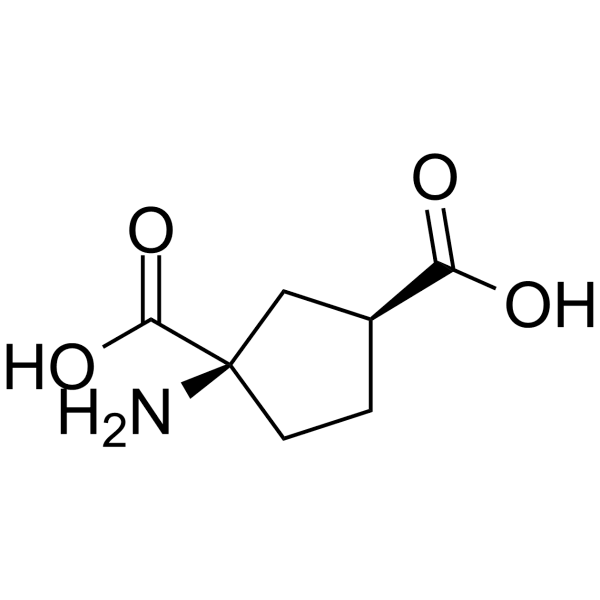All AbMole products are for research use only, cannot be used for human consumption.

For this product's availability, delivery time and price, please email [email protected] directly or click the "Inquiry Now" button below.
trans-ACPD, a metabotropic receptor agonist, produces calcium mobilization and an inward current in cultured cerebellar Purkinje neurons.
| Molecular Weight | 173.17 |
| Formula | C7H11NO4 |
| CAS Number | 67684-64-4 |
| Form | Solid |
| Solubility (25°C) | DMSO 50 mg/mL (ultrasonic) Water 3.57 mg/mL (ultrasonic) |
| Storage |
Powder -20°C 3 years ; 4°C 2 years In solvent -80°C 6 months ; -20°C 1 month |
[4] A Baskys, et al. Eur J Pharmacol. Trans-ACPD depresses synaptic transmission in the hippocampus
| Related GluR Products |
|---|
| Naftazone
Naftazone protects blood vessels, increases venous tonicity and capillary resistance, and improves lymphatic and venous circulation. Naftazone can be used for the research of venous insufciency. |
| VU0650786
VU0650786 is a potent and selective CNS penetrant negative allosteric modulator of metabotropic glutamate receptor subtype 3 (mGlu3 NAM), with an IC50 of 392 nM. |
| NS-102
NS-102 is a selective kainate (GluK2) receptor antagonist. |
| VU0424465
VU0424465 is a potent and partial PAM (positive allosteric modulator)-agonist for mGlu5 mediated iCa2+ mobilization. |
| ATPA
ATPA is a selective glutamate receptor GluR5 activator with EC50s of 0.66, 9.5, 1.4, 23, 32, 18, and 14 μM for GluR5wt, GluR5(S741M), GluR5(S721T), GluR5(S721T, S741M), GluR5(S741A), GluR5(S741L), and GluR5(S741V), respectively. |
All AbMole products are for research use only, cannot be used for human consumption or veterinary use. We do not provide products or services to individuals. Please comply with the intended use and do not use AbMole products for any other purpose.


Products are for research use only. Not for human use. We do not sell to patients.
© Copyright 2010-2024 AbMole BioScience. All Rights Reserved.
